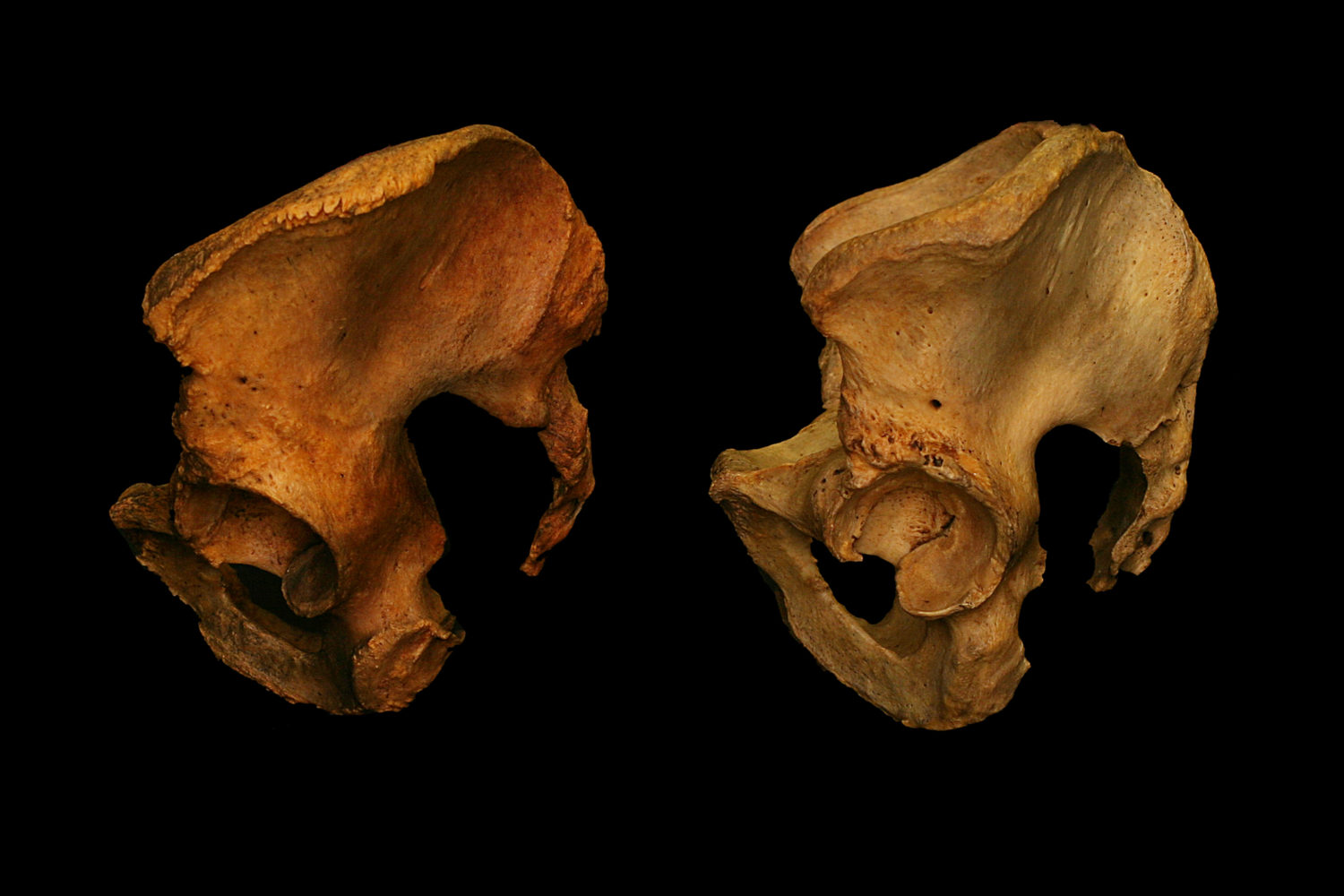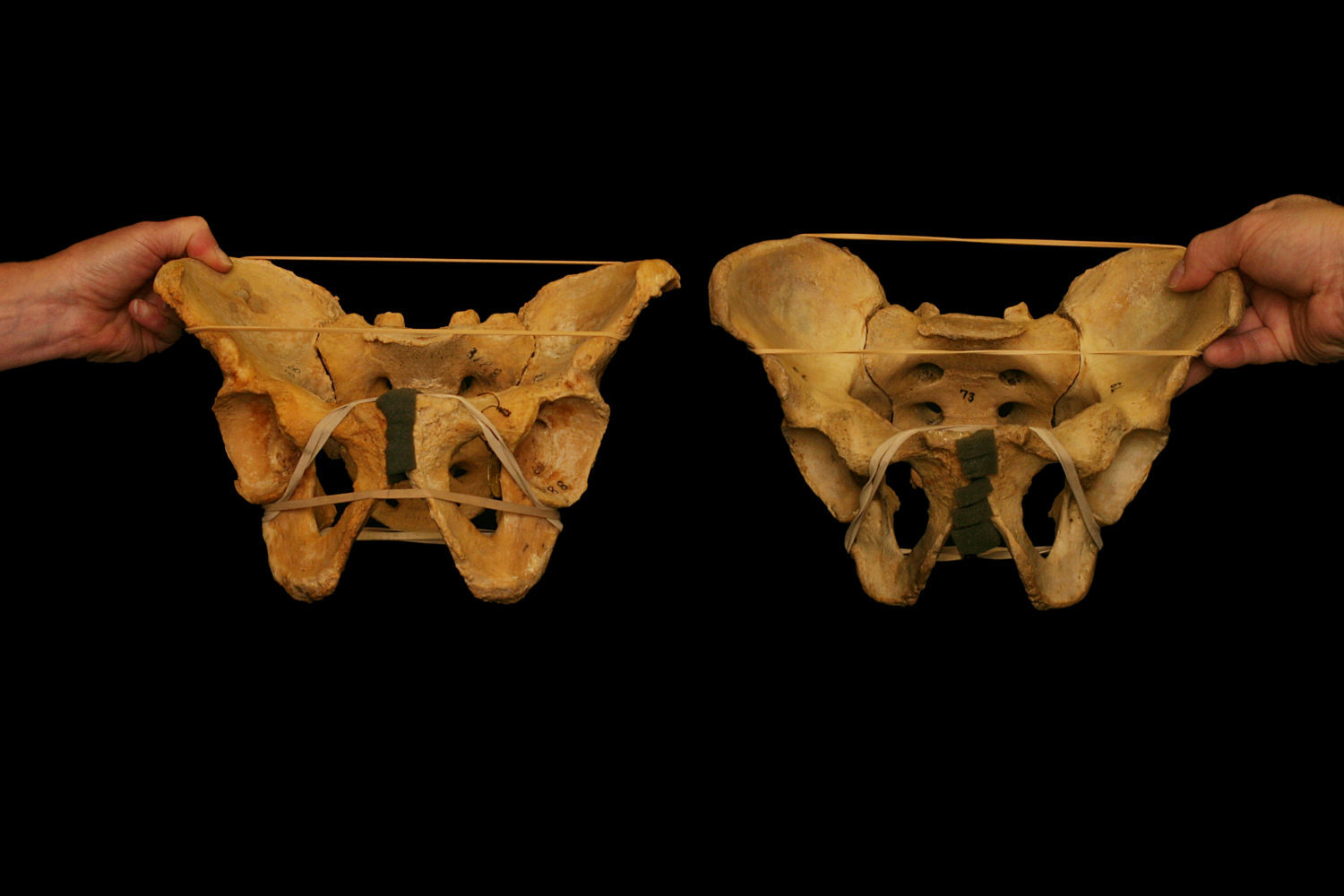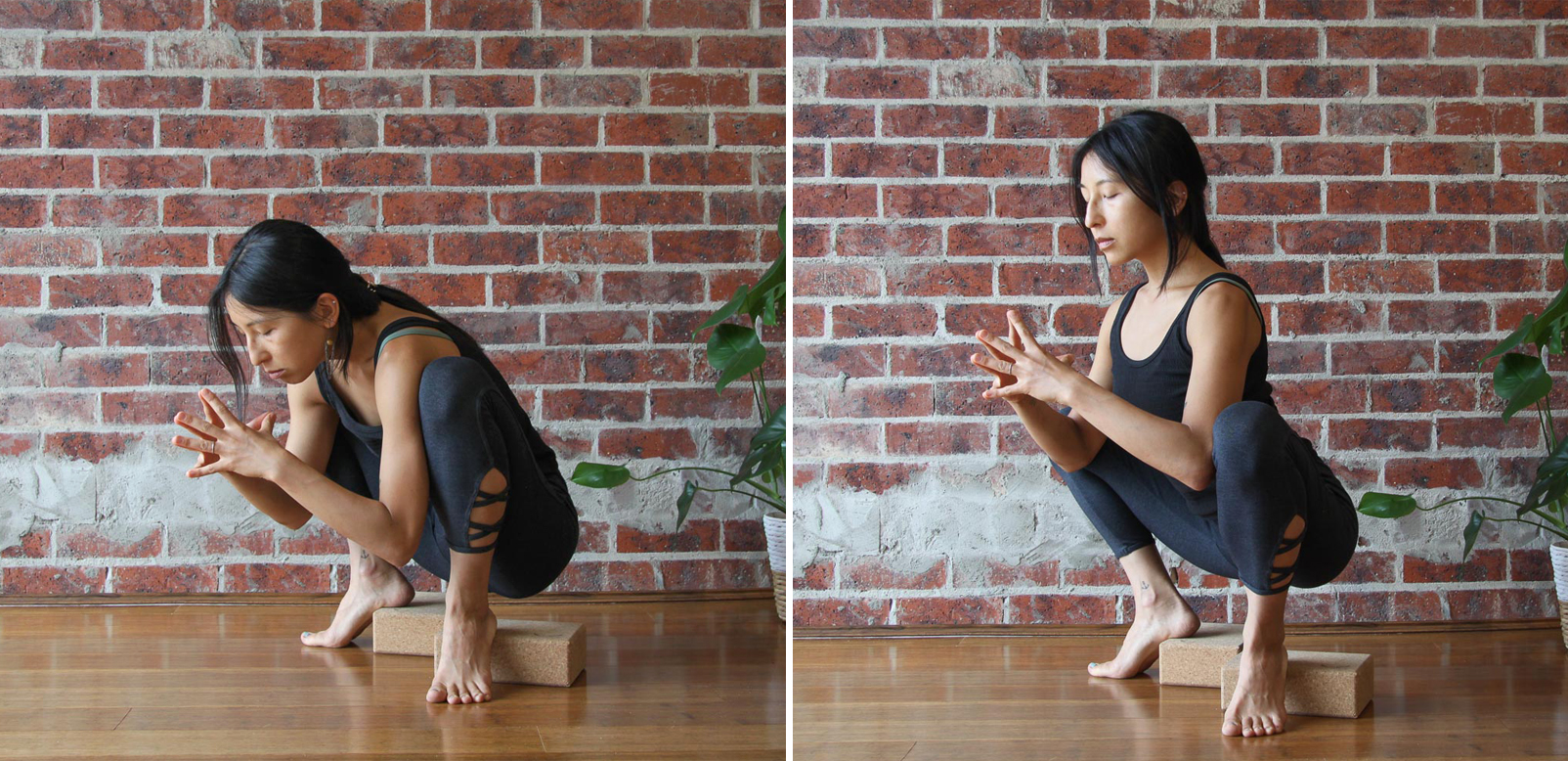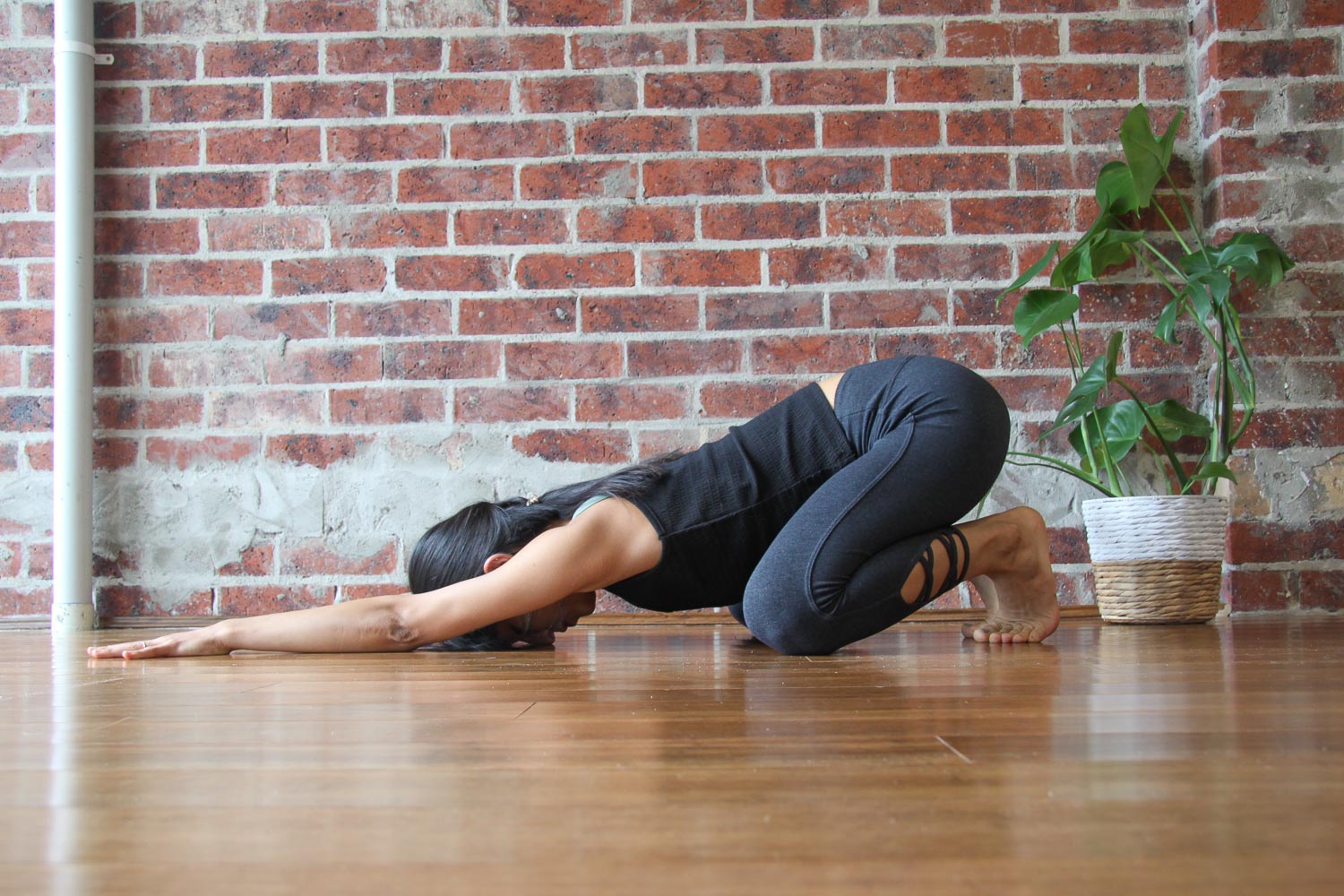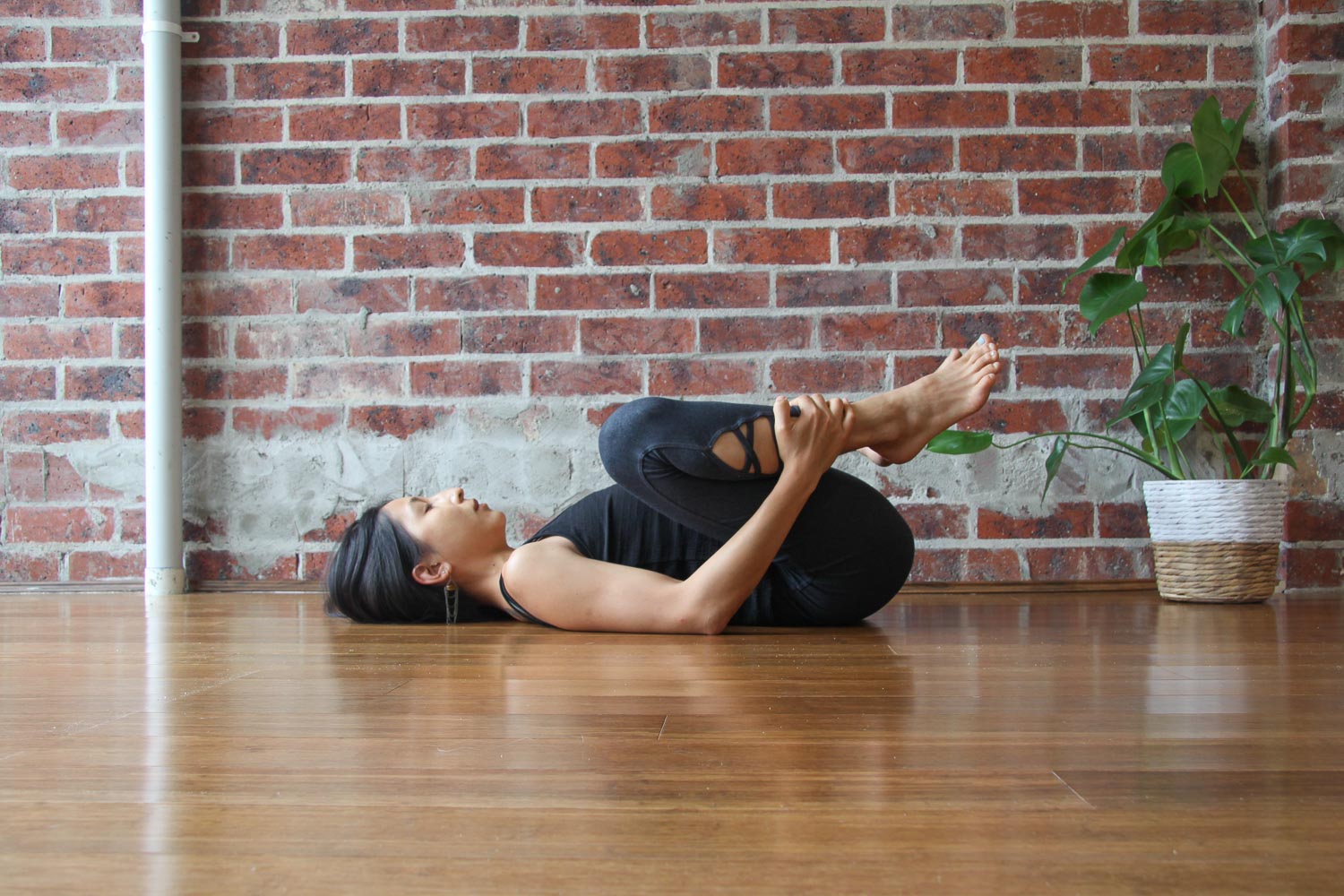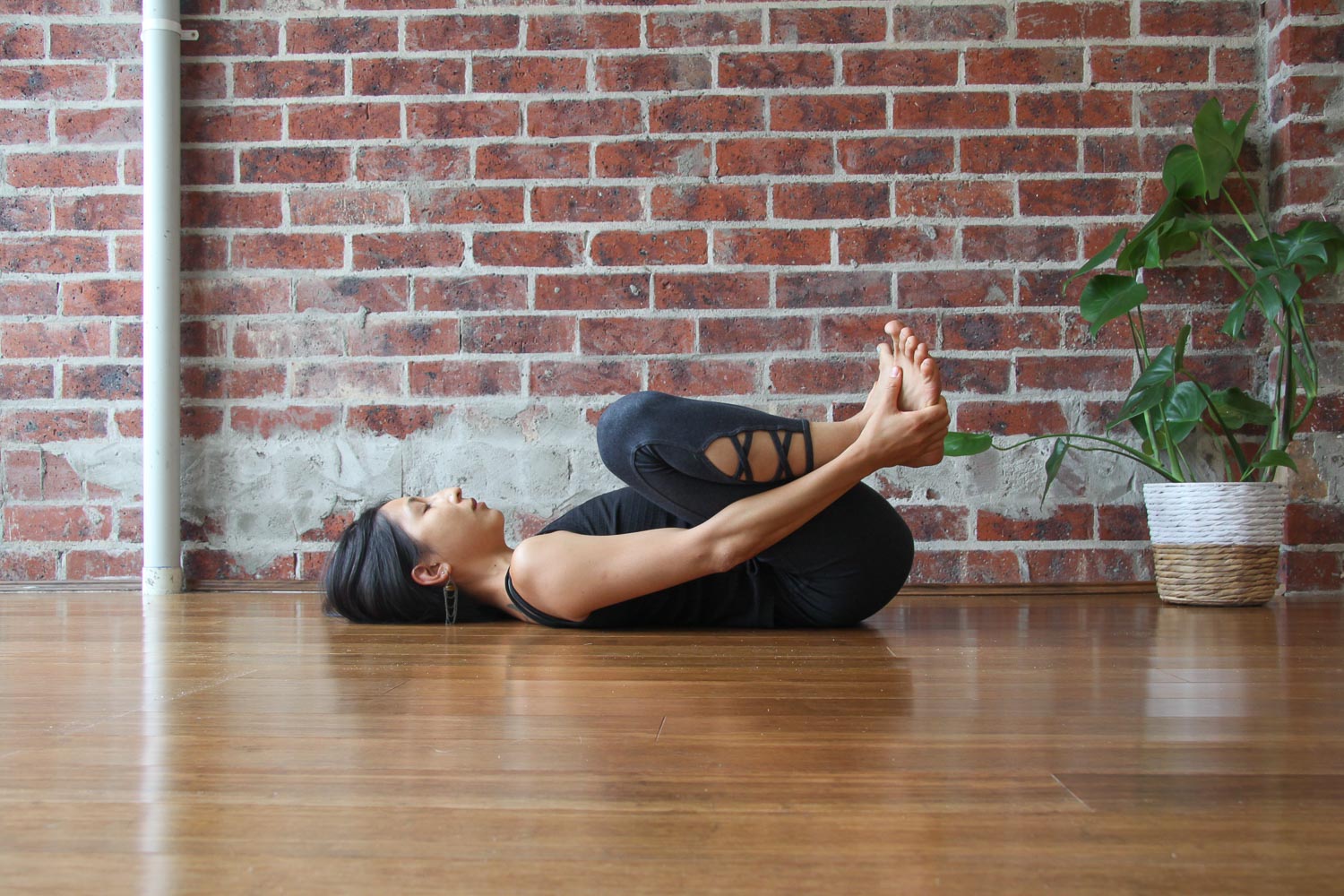Asana Guide | Steadiness in your Squat: Malasana
~*~
Malasana
(Mah-LA-sa-na)
Garland Pose / Yogic Squat
Malasana is one of the most beneficial postures for Western bodies.
There is abundant opportunity in this pose to create length in the often over-exerted space of lower back, to strengthen spinal alignment from the base; to build power and focus in legs and glutes; to emphasise joint awareness and stability in hips, knees, and ankles. It helps tone the organs through the compression to the abdomen, and stimulates apana vayu, the downward force related to elimination and healthy down-and-outward flow. Energetically, we draw attention towards Earth, increasing a sense of grounding and sthiti (unsurpassed calm).
For many of us, however, tension and unfamiliarity can make this shape a bit of a challenge and a mystery (what calm?!)
Let’s take a look at this seemingly simple posture, and the anatomy of joint complexes - particular at the hips and ankles - that require some understanding.
Skeletal differences between our bodies will always be the first determinant of how you experience the shape, and how you shape your experience. The muscular forces that work around the bones come second.
Two points are important to keep in mind: 1) bones are made for bearing weight; 2) muscles support the movement of bones. Integrating consideration of bones, therefore, is essential for maximum stability.
Look at how different the pelvis shapes are pictured below (photos courtesy of Paul Grilley). The connection point (acetablum) for the thigh bone (femur) is shaped vastly differently, and therefore the angles of rotation as well as movement within the joint is available accordingly. The hard structure of these joints create limitations in the movement of our limbs.
How ‘deep’ you reach into a particular shape to find that stability depends on two main types of limitations: tension, and compression.
TENSION comes from tight muscles (think the stretch feeling);
COMPRESSION comes from soft (muscles/soft tissue) or hard (bone on bone). Unless you are seriously considering re-shaping your bone shape, this cannot be changed!
The beauty of this is that the same sensations can and will be expressed in a unique way for all of our bodies. So, embrace owning your optimal version of the shape, rather than letting any shape own you!
Let’s investigate how to create the sensation of Malasana in your body.
CREATING THE SHAPE
Squat down, feet wide, hips heavy, heart light. Knees and toes point in the same direction to keep the knee and ankle joints safe and supported.
HEELS ON OR OFF?
Do you feel more stretch in the back of calves, or more compression in the front of your ankles?
If the first - this is muscular tension. If the latter, this may indicate skeletal (bone) compression.
There are many variations, none of which are ‘right’ for all - it depends on your intention. Grounding the heels down can provide a lot of benefit - we have a broader surface to press into, and also lengthen more into the back of the calves and inner thighs.
To help find this version, try taking your feet wider on the mat, before you inhale, keeping the chest light, and exhale to allow hips and tailbone to reach down and back (imagine a heavy tail behind you).
Placing a block(s) under the sit bones can be useful to offer some support.
Stay connected with the ground through spreading toes, pushing strongly downward through heels to keep the inner thighs active. Especially if you’re very open in the hips here and feel like you are ‘falling’ into the shape, pressing down creates more containment to build strength along with space.
WHEN YOUR FOUNDATIONS ARE SET
Create an up draught through the spine - think string from crown to sky. You can keep hands grounded, on blocks, or take hands to anjali mudra at heart centre. Push the elbows into the knees while resisting with the knees. Inhale, lift the heart as collarbones broaden.
Keep the breath flowing, as you ask for feedback from your body.
Do I feel sinking in the hips? If so, push down to uplift.
Do I feel hunched in the chest? If so, try push the feet down as you press the palms smoothly into one another. Lengthen your gaze forward - does this support a long back of neck and a feeling of lift?
Moment by moment, the tiniest of adjustments can offer a big difference.
NEW TO THE POSE
If Malasana feels a little too intense for your body as it is now, try these variations - similar sensations, different form, as a preparation or substitute:
Balasana (Child’s Pose, Modified)
The feeling of of opening inner thighs and hips, as you reach the tail long and hip creases away from hands.
With tops of feet flat, notice ankle extension rather than flexion. You might try tucking your toes to gain a stretch deeper into the soles of the feet, connecting to the whole back chain of the body. Start with 5-10 breaths, longer if you like.
Reclined Malasana
Back body long on the ground, navel gently draws towards the spine. Hands in front of knees, or outer blades of feet. Press thighs towards the chest, lengthen back of neck - support with a pillow or blanket if you find the chin or head being pulled upward.
Active toes, press outer arms against inner thighs, and vice versa. You might try drawing the breath all the way towards your low belly to gently ‘iron out’ the curve or lift at the base of your spine, and release with the exhale. Start with 5-10 breaths, broadening out internal space around the abdomen.
DEEPENING THE POSE
INTEGRATING BANDHAS
Bandhas are magic. They create a muscular engagement that reinforces an intentional breath, to lift and support not only the physical body, but the movement of energy within the body. Think of them like ushers working with the breath to direct attention to certain aspects of the joint complexes. They do wonders in supporting and amplifying the felt experience of a given shape.
Mula bandha - ‘Root Seal’ - an energetic and muscular lift to help support the hips in particular. Inhale, then on exhale, imagine a light scooping of the pelvic floor up towards the navel. Press deep into the mat through your heels.
Uddiyana Bandha - ‘ Upward Flying Seal’ - With Mula Bandha engaged, the navel is contracted lightly. Keep this, as an inhale lifts and spreads towards the chest, back, shoulders. Grow light, like a parachute upward. Smile collarbones wider as you press the palms into one another. A shape to counter hunching, rather than encouraging it!
Jalandhara Bandha - ‘Net/ Throat Seal’ - Gentle scoop of chin in towards throat. The back of neck elongates and the crown grows light. This helps to contain the energy between the crown and the base of spine.
All of this awareness prepares wonderfully for arm balances and balancing in general (feet), brighter posture, both interoceptive (internal) and proprioceptive (external) spatial awareness, and capacity for an intimacy with breath.
INTEGRATING YOGA IN LIFE
Of course, knowledge is dormant until it is practiced; therein lies wisdom.
You might try taking Malasana into your day, and pay close attention to what difference it creates each time. It is a great way to practice bringing attention to what is present, without falling into judgment or habitual stories…change your shape, shift your perspective.
WORKING | 2-3 mins of active malasana between sitting postures - a great way to bring some energy and blood back towards the hips and legs. If this feels strong, start with your sacrum against a wall so you can focus on grounding the feet and lifting the heart.
(I often use this as a seat when you working on my laptop or reading, you might try for 5-10 minutes if you’re comfortable in the shape!)
RESTING - A nice method of grounding energy and awareness, particularly before bed. Imagine filling your abdomen with breath, beginning from the pelvic bowl, to the belly, to the chest, and all the way out. Use a block or support under the sit bones, wall behind sacrum, or a reclined variation (as above) on some padding or a firm blanket for a more restorative approach.
Whatever form the shape takes in your body, Malasana can work deeply into the opening of inner thighs, the stretch into outer hips, and the core strength, pelvic stability and spinal length to open our hearts. Strength, focus, and the willingness to from the Earth upward.
READY TO PRACTICE TOGETHER?
FUNDAMENTALS FLOW is a great way for beginners or those refreshing their practice to learn safe and practical ways of creating a foundational practice.
FLOW & GROW, or our new monthly UNDERSTANDING ASANA intensives (first Thursday/month) are excellent opportunities for regular yogis to fine tune and deepen towards a holistic, integrated self-practice.
~*~
Were these suggestions useful?
If you had a go at any of them, we’d love to hear your comments or discoveries!
You can leave thoughts below or chat to us next time you’re in the studio.
x Lucy & Andrew


